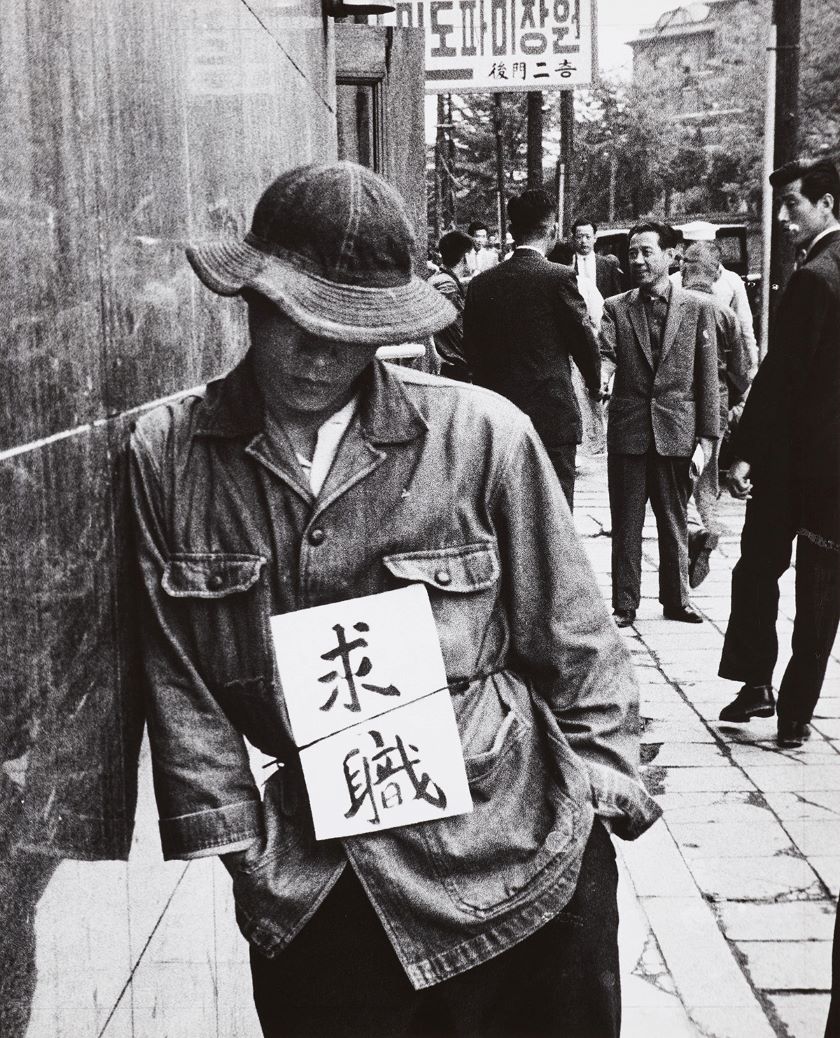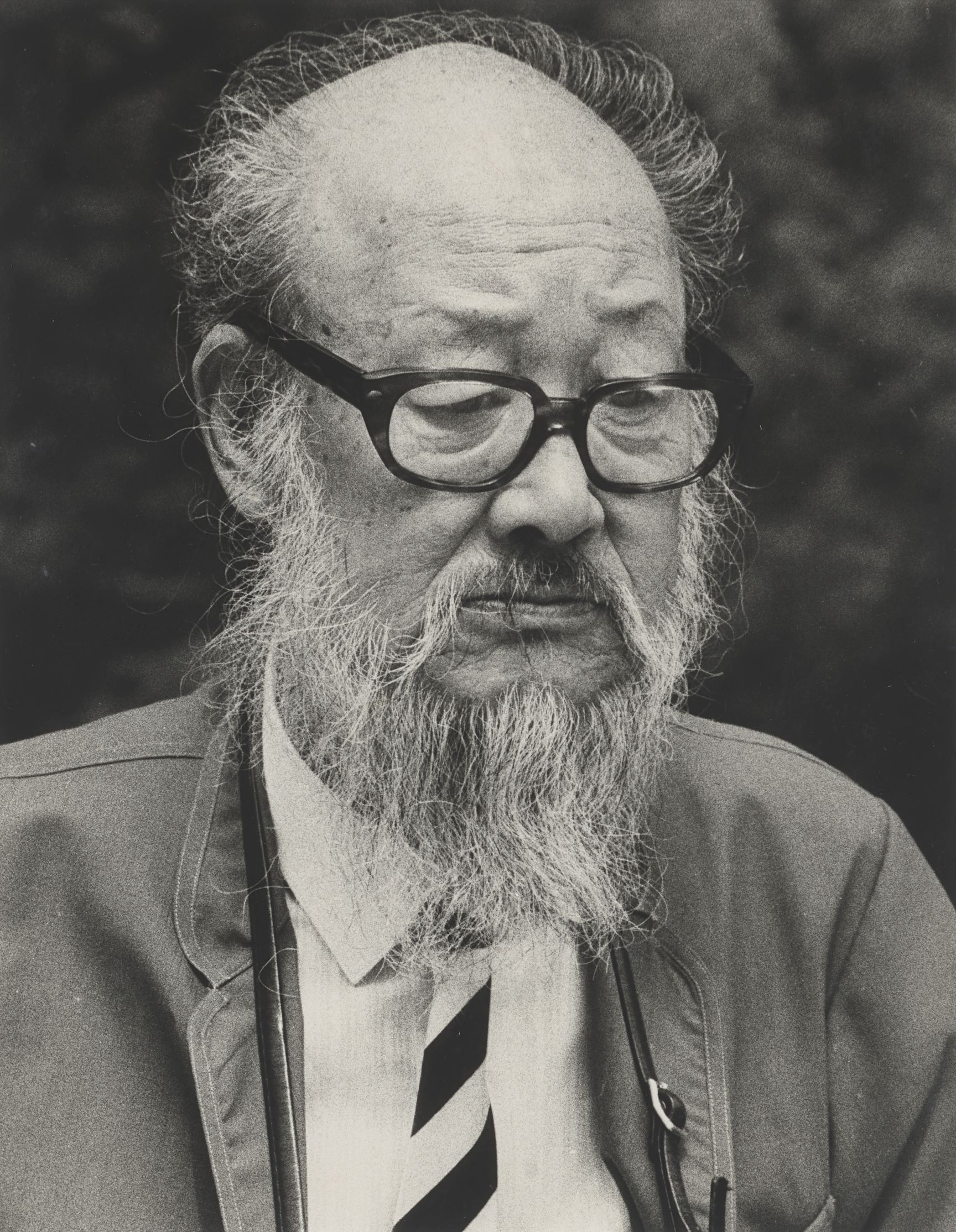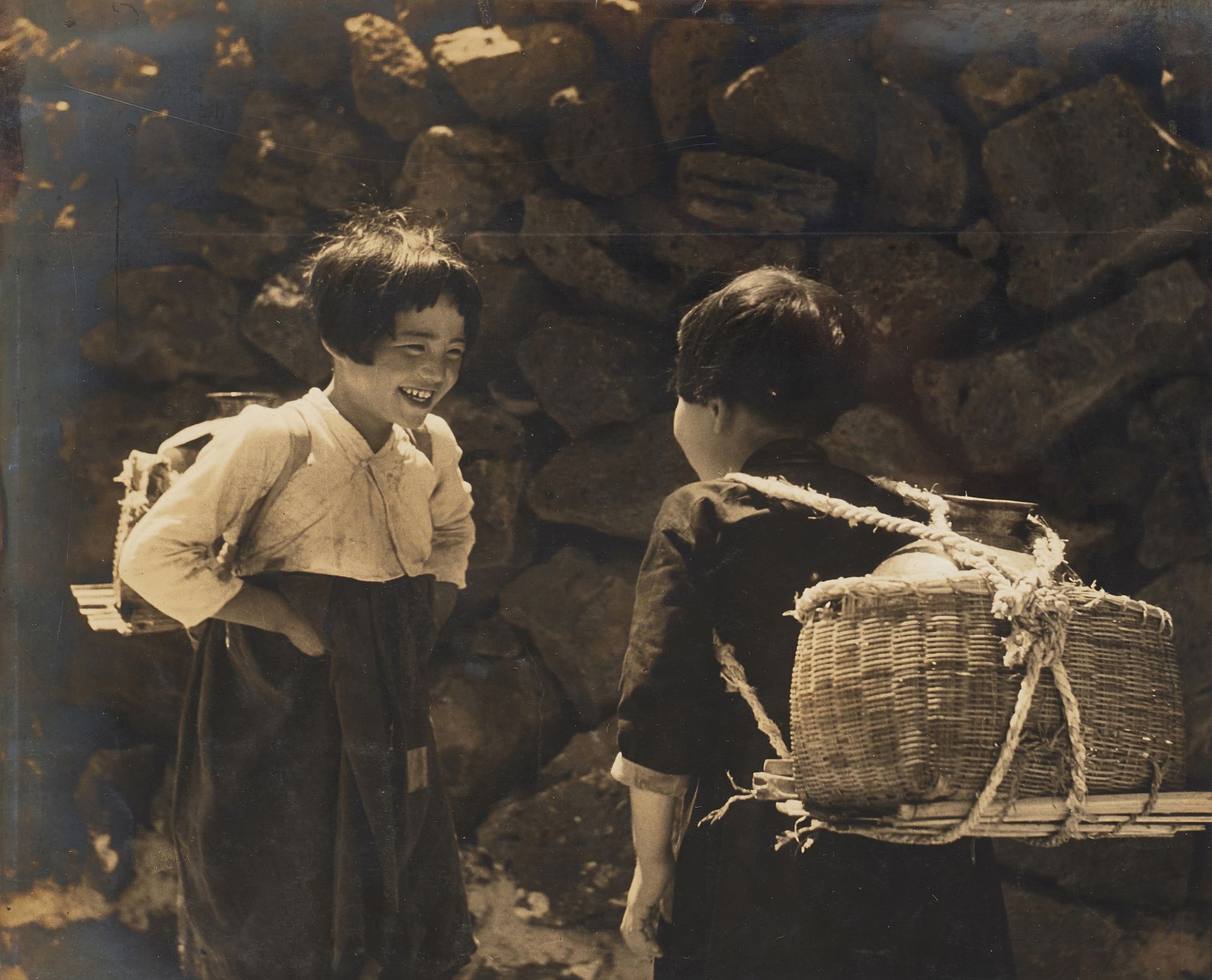
Lee Hyungrok, The Shoe Vendor in the Street, Namdaemun Market, Seoul, 1950s(printed 2008), Gelatin silver print on paper, 49.3×59.5cm. MMCA collection
Lee Hyungrok
* Source: MMCA
Related
-

Salon Ars
A photography group established in 1960. The group received attention after the first exhibition was held in 1961. Former members of the Shinseonhoe participated in the group, including Lee Hyungrok, Chung Bumtai, Lee Sanggyu, Kim Yeolsu, Shin Seokhan, and Kim Haeng-o. The group sought to retain the interest in realism espoused by the Shinseonhoe, while improving upon the lack of formativeness and creativity that the group was criticized for. To this end, in their photographic images, the group emphasized the contrast between light and dark and layouts that emphasized formativeness and simplistic placement of objects. Salon Ars disbanded after their inaugural exhibition, however, its membership remained active as part of the Modern Photography Society.
-

Sinseonhoe
A photography club formed in April 1956, by young photographers in their 20s and 30s, such as Lee Hyungrok, Lee Ansun, Jo Gyu, Son Gyumun, Lee Haemun, Chung Bumtai, Jo Yonghun, Han Youngsoo, An Jongcheol, and Kim Beomsam. The group adopted an attitude that diverged in technique and content from Salon photography, which centered on realist photography. In doing so, the group established a new trend in Korean photography. The group was not a social club, but rather a pure research association that elevated the dominant methodologies of Korean photography to a new level. In 1960, internal disputes within the Shinseonhoe led key members including Lee Hyungrok to resign and form Salon Ars.
-

Limb Eungsik
Limb Eungsik (1912∼2001, courtesy name Gujeong) was a native of Busan. He studied at the Busan Chesinriwonyangseongso (academy for communications officers) in 1931, and in 1934, he graduated from the Toshima Communications School in Japan. In 1935, he began working at the Gangreung Post Office, where he established the Gangreung Sauhoe, a photographers club. From 1946, he managed a photograph processing lab called ARS, which was located in Busan. There he established the Busan Gwanghwahoe, another photography group. During the Battle of Incheon in 1950, he served as a wartime photographer, and in June 1952, he held a joint exhibition with the Korea Fine Art Photography Institute in Busan, after which he established the Korea Photographers Association in December. In 1954, he taught the first photography class the College of Fine Arts at the Seoul National University and he continued to teach at Ewha Womans University and Hongik University, before spending four years, from 1974 to 1978, as a professor at the Chung-Ang University photography department. During the Japanese colonial era, Im primarily produced pictorialism photographs, but from the 1950s and onward, he rejected artistic salon photography and engaged in "Everydaylife realism [Saengwhaljuui]," which depicted reality in close up. His photography albums include Hanguk Gogeonchuk (Korean Heritage Architenture) (1977), and Pungmo (1982), which was an album of portraits of people in the field of culture and arts.
Find More
-

Hyun Ilyeong
Hyun Ilyeong (1903-1975) was a pioneer of early commercial photography and a prominent figure in the history of modern and contemporary Korean photography who explored a new language for everyday documentation. He went to Maedong Commercial School in Seoul and took classes in the English department at YMCA. In 1929, while living in Manchuria, Hyun submitted Megane Liver Oil to the International Commercial Art Photography Competition organized by Japan’s Asahi Shimbun newspaper company. Winning second prize, he was introduced to the photography world. He held his first solo exhibition in 1931 in Dalian, Manchuria and later held his second solo exhibition in Pyongyang, which led to voluminous creative activities. In 1932, he moved to Seoul and opened Hyun Ilyeong Photo Studio on Jongno 2-ga, where he worked as a commercial photographer. In 1935, he went to Japan to study at the Oriental Photography School. In 1946, shortly after Korea’s liberation from Japan, he founded the Portrait Photography Research Society of Seoul [Seoul insang sajin yeonguhoe] along with Kim Gwangbae, Park Pilho, Lim Sukje, and others, and served as president. In 1947, he was dispatched to Ulleungdo and Dokdo Islands on an academic research mission organized by the Joseon Mountaineering Club and sponsored by the Ministry of Education, where he photographed the landscapes of Ulleungdo and Dokdo with Choi Kyebok. Starting with his third solo exhibition held in 1956 at Dong Hwa Gallery in Seoul, Hyun immersed himself in the possibilities of photography as an art form and captured ordinary objects and scenes of everyday life with a personal and lyrical approach. In particular, his photographs capture simple things in daily life, including a clock, calendar, ashtray, and a pack of spools, from a contemplative point of view and express them in a neat black-and-white photographic language. His last solo exhibition was held in 1972. After his death, in April 1984, the photographer Joo Myungduck, the photography researcher Choi Injin, and others held an exhibition of posthumous photographs by Hyun Ilyeong at Hanmadang Gallery in Junghak-dong, Seoul. Sigak Publishing published Hyun Ilyeong: 1903–1975, a collection of his posthumous photographs.
-

Lim Sukje
Lim Sukje (1918–1994) was an important modern and contemporary Korean photographer. He joined the Korean Photography Alliance [Joseon sajin dongmaeng], which was founded on June 13 in 1947 in Jongno, Seoul. As a member of the first squad of the cultural operation unit of the Korea Federation of Cultural Organizations [Joseon munhwa danche chongyeonmaeng], a representative left-wing organization, Lim led activities to build a new culture in the newly liberated environment. Together with other members of the Korean Photography Alliance, he participated in a traveling exhibition of the cultural operation unit hosted by the Busan Sinmun newspaper company in June 1947 by submitting press photos of the U.S.–Soviet Joint Committee, documentary photos of the Namsan Mayday event, and photos of left-wing leaders. By doing so, he widely disseminated historical records of the time to the public. From August 7 to 14 in 1948, he held The First Solo Exhibition of Art Photography by Lim Sukje at Dong Hwa Gallery. According to the photographer Hyun Ilyeong, Lim Sukje Art Photography Solo Exhibition is significant as “the first solo photography exhibition held after Korea’s liberation from Japan by overcoming the extreme shortage of photographic materials.” Given that Lee Taeung, a chairman of the Korean Photography Alliance, wrote a recommendation and that other alliance members presented their works in support of him, Lim’s solo exhibition shows the last activity of the alliance members before they were removed from the organization’s roster. The photos displayed in Lim’s solo exhibition featured men engaging in manual labor, including a laborer carrying imported food at the Incheon wharf, another in a workplace, and a tenant farmer. Accordingly, his photography was considered to break away from traditional painterly and romantic styles, pursuing instead stark and hard-edged realism. In 1952, Lim served as president of the Korean Photographic Art Research Association [Daehan sajin yesul yeonguhoe]. He continued to develop his creative oeuvre by holding nine solo exhibitions until 1962.
-

Choi Kyebok
Choi Kyebok (1909-2002) was a major figure in the history of modern and contemporary Korean photography who played an important role in the development of art photography in the modern era and in the production of photographs for promoting the country after Korea’s liberation from Japan. He was born at 102, Jongno 1-ga, Daegu, Gyeongsangbuk-do Province (currently 19, Dongmun-dong, Jung-gu, Daegu). He went to Kyoto in Japan around 1925, entered the Einō Camera Shop in Teramachi, Shimogyo-ku as an apprentice and learned photography. In 1933, he returned to Korea and opened his own store Choi Kyebok Camera Shop to sell photography equipment at Jongno 1-ga in Daegu. In the following year, he formed a photographers’ club named Daegu Amateur Sauhoe and led the local photography culture. In the 1930s and 1940s, Choi developed his own distinctive oeuvre by submitting his major works to the Joseon Photography Exhibition [Joseon sajin jeollamhoe], a photo contest hosted by Joseon Federation of Photography [Jeon joseon sajin yeonmaeng], and the Prize Competition for Photos of Enjoying the Cool Air, a photo contest organized by the Chosun Ilbo newspaper, and by winning prizes. Submitted works include Spring in Yeongseon Pond, Spring Wind, Sand Hill, Summer Suburbs, and Summer Hilltop. In 1942, he participated in the Joseon Mountaineering Club’s ascent of Baekdusan Mountain as a documentary photographer and photographed the scenery of Baekdusan Mountain and its lake. In and after 1945, he led the founding of photography organizations, such as Geonguk Photography Culture Federation [Geonguk sajin munhwa yeonmaeng], Daegu Photography Association [Daegu sayeonhoe], and Daegu Photographers Club [Daegu sauhoe]. In 1947, he was dispatched as a part-time reporter of Daegu Sibo newspaper to Ulleungdo and Dokdo Islands for the academic research mission organized by the Joseon Mountaineering Club and sponsored by the Ministry of Education. There, he took documentary photographs. When the Korean War broke out, he served as a military photographer in the press division of the Information and Education Bureau of the Ministry of National Defense. Choi Kyebok made efforts to educate students on photography by establishing the Korean Photographic Art Academy, the first photography institution in Daegu, in 1952. When the Korean Photographers Group was founded in 1957, he became its first president. He was commissioned by the government and public organizations to photograph national publicity materials and cultural heritage items. Choi’s oeuvre encompasses a wide variety of subjects ranging from modern art photography to mountain photography, academic research photography, and photographs of historical ruins and cultural heritage. It shows not only the formation and development of Korean photography circles, but also photography’s social role in the nation's formative period.






